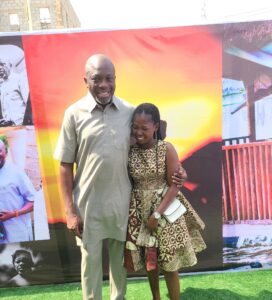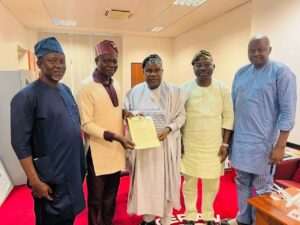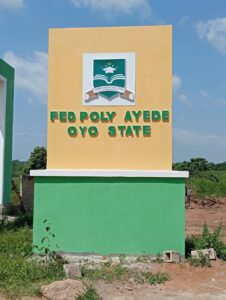
Yoruba historians have done a lot of works on the ‘collapse’ of the Old Oyo Empire and the factors responsible for it. One vital factor, according to Reverend Samuel Johnson, was the lack of unity among various Yoruba leaders who were after their own personal interests. Some of them are Basorun Gaa, Afonja, Edun of Gbogun, Adegun, Onikoyi, Prince Atiba from Ago-Oja (Oyo), among others. These leaders seemed to have aggravated the crisis in Oyo Empire by being disloyal to the sovereign, rebellious against the king or created a parallel government. Among those with exceptions were Toyeje, Aareonakakanfo.
Little or no attention has, however, been paid to individual or corporate efforts to stem the tide of disunity in the Empire. In fact, we have, on record, efforts made to check the excesses of overambitious leaders. There were efforts to chech the ambition of Afonja. Reverend Johnson recorded the efforts of Ojo Agunbandaru, the son of Basorun Gaa against Afonja. He was, be that as it may, said to have failed because his efforts were directed at revenging against the enemies of father than saving the Yoruba land.
Besides, the efforts of the Osi Kakanfo, Fagbohun, Baale of Jabata, in warning Afonja against jettisoning Yoruba forces for Hausaand Fulani allies and the efforts of Aresa, the sovereign of Ibolo province in organizing Ogo Were military band, probably to chechmate Afonja, or as a counter force to the ‘Jamaa’ were all recoded.
An important effort to resolve the crisis in the Empire was the Ikoyi Conference of 1826 at the instance of Alaafin Majotu. This move in conflict resolution had remained an unexplored area of the 19th century Yoruba history. This is, therefore, an attempt to shed light on the Ikoyi Conference of 1826, reasons for its failure, and impact of future Yoruba land.
The conference was convened by Alaafin Majotu. His period as Alaafin which coincided with the periods of Emirs Abdulsalam and Shitta in Ilorin witnessed the continuation of hostility between Ilorin and Oyo. As a matter of fact, he was just to the emergence of feeble Alafain since the time of Afonja, and long interregnum that followed. Successive Alaafin was sovereign only in the capital; the supporting towns were pseudo-independent and had no regard for the authority of the Alaafin. Ilorin bellicose posture did not help the matter because she was the dominant power in the Yoruba land, having an eye not only on Alaafin’s thronebut also on the whole of the Yoruba land. What made matter worse for Oyo was the lack of unity of purpose. Except few leaders like Fagbohun, the majority of the leaders of the Empire were after their ego or personal aggrandisement. Another cause of the insubordination to the Alaafin by many stalwarts in the Empire was the long interregnum in Oyo-Ile which enabled many provincial rulers to usurp power and authority in the provinces for their own ends.
At the end of the interregnum and enthronement of new Alaafin, the provincial rulers did not want to forgo their undue privileges enjoyed by the provinces. The leaders of Oyo of that time included Adegun, the Onikoyi, Aareonakakanfo, Edun of Gbogun and younger elements like Prince Atiba. Some Yoruba leaders in Ilorin like Solagberu at Oke Suna were not concerned about the survival of Oyo nation but their own fiefdom. In actual fact, each of them respected the authority of Ilorin rulers than that of Oyo. Probably, they thought being in a good book of Ilorin would help to secure their own fiefdom independent of Alaafin and preserve the balance of power among the Oyo Pristine and disparage powers at Oyo-Ile; invariably, all the subterfuge deepening Ilorin’s hold on Oyo Empire.
Stalwarts in Oyo Empire with the expectation of Alaafin and a few others were after the subversion of one another than the preservation of the territorial integrity of the Empire. In achieving this, most them relied on the support of Ilorin, the common enemy of the Empire. As a result, Ilorin was able to serve as stabilizing factor in Yoruba land.
Alaafin Majotu was said to be disturbed by the scenario in the Empire which included the insubordination of the chiefs to his authority, the unity of purpose among the leaders of the Empire all in the face of a hostile neighbour to the North, Ilorin. He was reported to have complained about this problem to a European who visited Oyo during his time. Johnson suggested the European to be huge Clapperton, who visited Oyo around 1824. He sought military assistance from the Whitemen to call his rebellious subjects to order. Since he had no power to do this, the Whiteman was said to have visited some leaders of the Empire, advising them on the need for unity in the face of the common enemy. This probably culminated to the peace conference held in Ikoyi in 1826.
Ikoyi was chosen as the venue of the conference convened by Alaafin Majotu to unite all Oyo political elite in view of the threat posed by Fulani rulers in Ilorin to the corporate existence of Oyo Empire for various reasons.
One, Ikoyi was a provincial headquarters of Oyo Empire. Ikoyi is variously described as being the head town of the Eastern Province, Ekun Osi. Other towns within Ekun Osi were Igbon, Iresa, Oje-Ile, among others. However, Ikoyi was the chief town in the Western Province or Ekun Otun. At the inception of the Oyo Empire, the major supporting powers of Alaafin were the Olugbon of Igbon, Aresa of Iresa, Onikoyi of Ikoyi. The provinces were shared among the three powers. Thus, the Eastern Province was under the Olugbon of Igbon as the headquarters; the Wertern Province was under Onikoyi of Ikoyi as the head town; Ibolo Province was under Aresa with Iresa as the headquarters. Later, Epo province was added with Iwo as the headquarters. It is probably with the expansion of the Empire and foundation of more towns that the Empire was restructured and some provinces broke for administrative convenience, then we have Ekun Onko, among others. Consequently, as a provincial headquarters, Ikoyi could have hosted the conference.
Two, Ikoyi’s proximity to the towns of the major political and military powers remaining in Oyo at the time could have been responsible for her hosting the conference. It was attended by Adegun who was the Onikoyi and the chief host, Edun of Gbogun, Atiba of Ago-Oja, Elebu of Ago-Oja, Ojo of Abemo, Kurumi of Esiele, Olugbon Olugbode, Onpetu Atoyebi of Oje-Ile who was the guest of Onikoyi at that period in time, Aresa Osunbiyi, Baale Oluwusi of Ogbomoso, Timi of Ede, and several leaders from the provinces.
Three, Ikoyi was chosen to host the conference to placate Adegun and win his support for the Alaafin which was vital if the unity was to be established among various interests in the Empire. Adegun was said to be the greatest power in the Empire at that time, his nemesis, Toyeje of Ogbomoso having died and he had Edun of Gbogun whom he made Kakanfo at his bell and call. Adegun was in the mould of Basorun Gaa, Afonja and other recalcitrant members of Oyo ruling elite. The difference, however, was that Adegun was a king while others were nobles. Adegun Onikoyi was a very prominent stool in Oyo Empire. Militarily, Onikoyi was one of the original Esos. Even, when obas no longer went to war, Onikoyi could be called upon by Alaafin to lead provincial obas and baales to wars.
By and large, Adegun’ s personality was one of the factors that made him a powerful man in his era. He was about the greatest and most powerful provincial obas in his days. He made fortune from his war booties. He was a friend to Abdulsalam of Ilorin, being one of the young soldiers under the command of Are Afonja before his death. He knew major political and military elite in Yoruba before he ascended the Onikoyi’ throne. His popularity as a soldier helped him to defeat other contenders. He was a great diplomat, well respected by the AlaafinMajodu and was believed to be one of those who could save the land from the menace of the Fulani leaders.
On the other hand, like other usurpers before him, he had the ambition of creating a fiefdom for himself. This was why he unilaterally installed Edun of Gbogun as Kakanfo, in place of Toyeje appointed by Alaafin Majodu. It was probably the belief of Alaafin that if Adegun could be won to his side, other rebellious and disloyal elite would be brought under control. The idea worked because, despite the failure of the conference to achieve its aim, Adegunwas able to unite all the military leadersin the land during the Kanla War of 1826, where he, unfortunately, lost his life.
The Conference was attended by the provincial chiefs, including the leaders mentioned above and the Ilari sent by the Alaafin. After a long deliberation, the leaders resolved to cooperate with the Sovereign. However, when the Ilari, sent by the Alaafin, was invited in order to convey the good news to the Alaafin, the Ilari’s name, Kafilegboin, which depicted implacability forced the leaders to rescind their decision. In actual fact, an Ilari’s name generally signifies the attributes of the king or is significant of his purposes, intention and will or else the preservation of his life. Consequently, the name of the Ilari sent by the Alaafin was interpreted that Alaafin’s intention was that he did not want unity but had the ploy to win them back and destroy them. This is a very important factor for the failure of the Conference to achieve unity among the disparate interest of the Empire. Another reason for the failure, according to Akinjogbin, is that a single conference could not have been enough to solve the crisis that had engulfed the nation for up to 30 years. At least, it should have been made a periodic gathering. As a result, the Conference was disbanded and could not achieve the desired result.
Nevertheless, the fact that the leaders could meet to discuss the rancor among them was a plus for the convener and attendees. Secondly, the Conference exposed to all in attendance the danger that lack of unity had brought upon the nation and thus created the consciousness of nationalism in them on the need to save the nation from foreign occupation. Thirdly, the Conference was a template upon which further gatherings of the Yoruba leaders was based. The coming together of the leaders to wage war against Fulani from Ilorin’s throne between 1826 and 1835 was consequent upon the spirit of Ikoyi Conference. For instance, at Kainla War which took place in 1826, the majority of the attendees went to war in support of Alaafin but the war was lost. Equally, all subsequent wars were jointly fought by all Yoruba leaders. More, the congregation of about 143 towns in Ogbomoso to offer a joint resistance to Ilorin invaders from 1820 could have been due to the spirit of Ikoyi Conference.
In addition, the Conference served as the template or probably the precursor of Oyo Conference in 1837, where the defence pact was made between various Oyo leaders on how to defend the remnants of Oyo power from external attack. Also, Ibadan Conference of 1858 where Oyo leaders agreed to reform some of the traditions and customs of the Old Oyo Empire was centered on the spirit of Ikoyi Conference.
Of importance among the customs was the one which made it obligatory for the crown prince of the Alaafins, Aremos, to die with his father that was abolished. The refusal of the then Aareonakanfo Kunrunmi of Ijaye who was not probably invited or refused to attend the meeting to accept the reforms made at the meeting was one of the remote causes of the second Ijaye War between 1860 and 1862.
…Adewuyi, historian, writer, researcher, culled the piece from one of his books, “Issues in Ogbomoso History”. He could be reached through: 0806 632 8387






